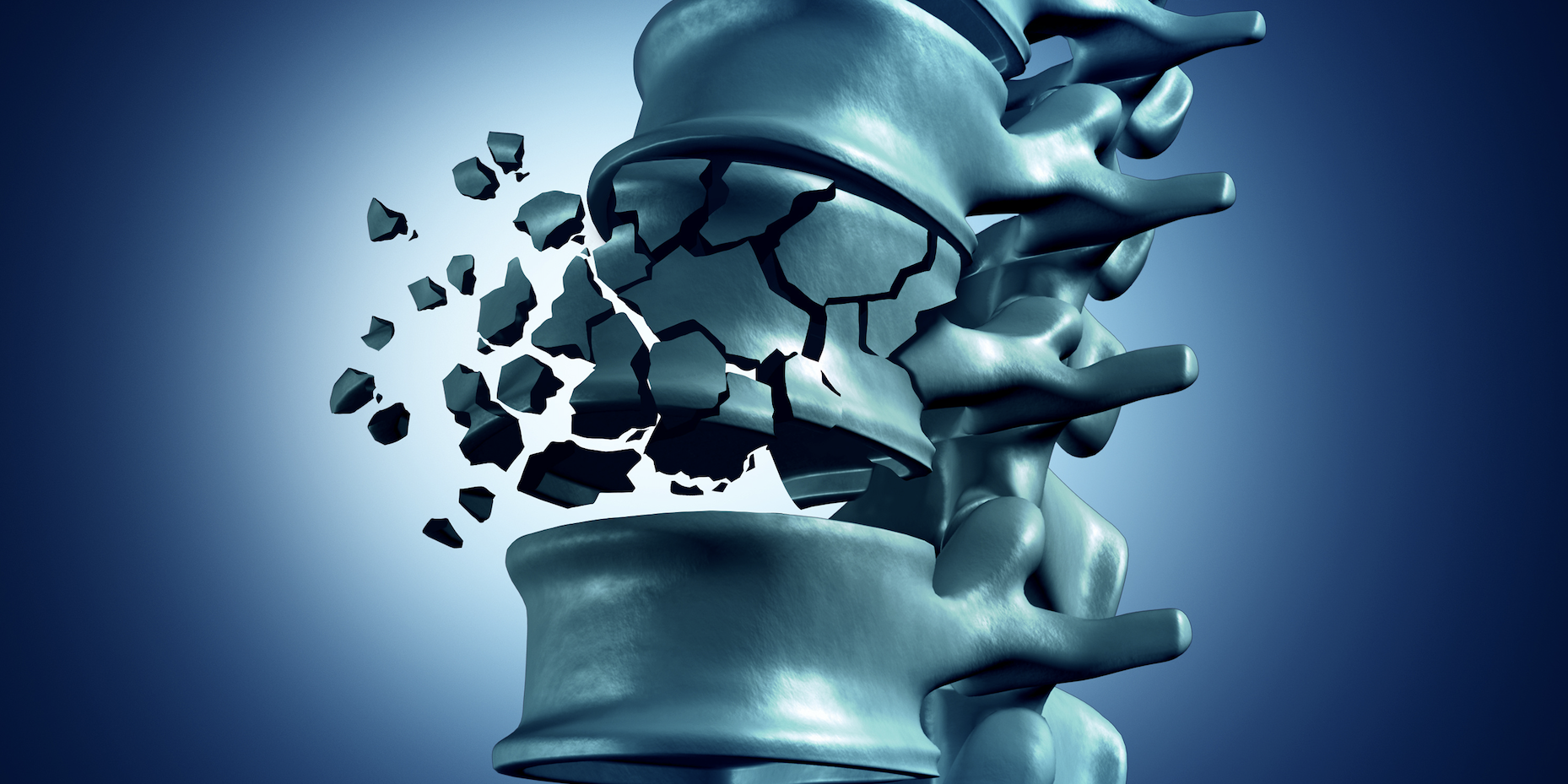Before delving into vertebral compression fracture, it helps to understand the spine’s structure. The spine consists of bones, nerves, muscles, tendons, and ligaments. The bones are called vertebrae. They make up the building blocks of the spine.
The lower back contains five lumbar vertebrae, the upper back has 12 thoracic vertebrae, and the neck has seven cervical vertebrae. Every vertebral segment has a cylinder-shaped bone in front of the spine. This is the vertebral body, which is also called the centrum.
When the vertebral body cannot support the load of the spine, it may be because of a vertebral compression fracture (VCF). In short, it’s a breakdown of a bone in the spine usually from the vertebra bearing too much pressure. A VCF ranges anywhere from mild to severe and often occurs in the lumbar or thoracic regions. It’s also referred to as a spinal compression fracture.
What Are the Symptoms of a Vertebral Compression Fracture?
A VCF can be caused by a number of things, even simple activities like opening a window or sneezing. Trauma such as car accidents and falls can cause a vertebral compression fracture. If the VCF is mild, the patient may not experience any symptoms.
The amount of pain and function affected depends on the fracture severity and the number of vertebrae affected. A patient with moderate or acute VCF may experience the following symptoms:
- Back pain that worsens when walking or standing
- Sudden, severe, and sharp back pain
- Shrinking height
- Back muscle spasms
- Sudden weakness in arms or legs
- Difficulties walking, urinating, or having bowel movements
If an individual experiences any of these symptoms, it may be time to see a back and spine doctor. It’s recommended to make an appointment when the pain at rest is the same as moving around, it leads to unintentional weight loss, or the patient has a history of cancer.
How Is VCF Diagnosed and Treated?
To diagnose VCF, a healthcare provider will ask questions about a patient’s medical history. The provider will conduct a physical exam that includes checking the spine. Depending on the patient’s situation, the healthcare provider may order X-rays, a CT scan, an MRI, or a bone scan.
The outcome of the examination and imaging will determine the ideal treatment. The good news is that there are a few non-surgical routes to try. A mild fracture may only require bed rest. A healthcare provider may recommend using a cane or walker to maintain balance. It’s possible the patient will be advised to take over-the-counter medication or receive a prescription from the doctor for the pain.
In some cases, the doctor may recommend a back brace to ease the pain while allowing the vertebrae to heal. To improve mobility and lessen back or neck pain, the doctor may prescribe physical therapy. If none of the minimally-invasive options work, surgery may be an option to stabilize the spine and decrease the pressure on it.
Have a question? Please contact us or call 214-823-2052. We have two conveniently located offices in Addison and Dallas serving patients in Dallas, Addison, Plano, Frisco, Garland, and other cities in the DFW metroplex.







